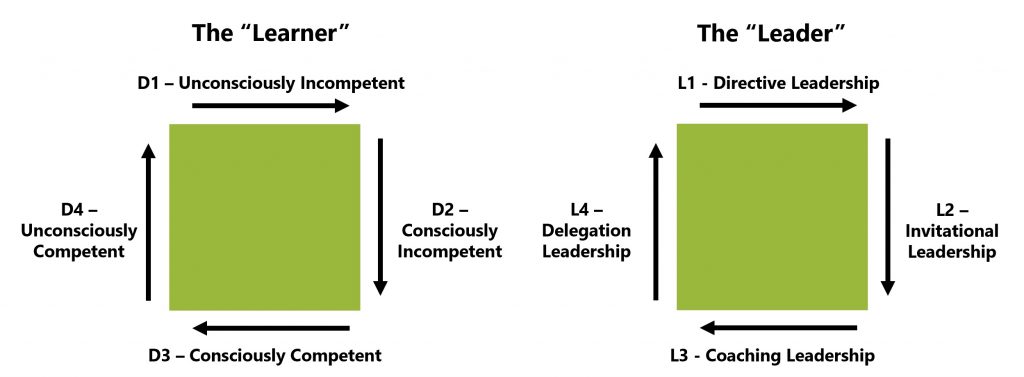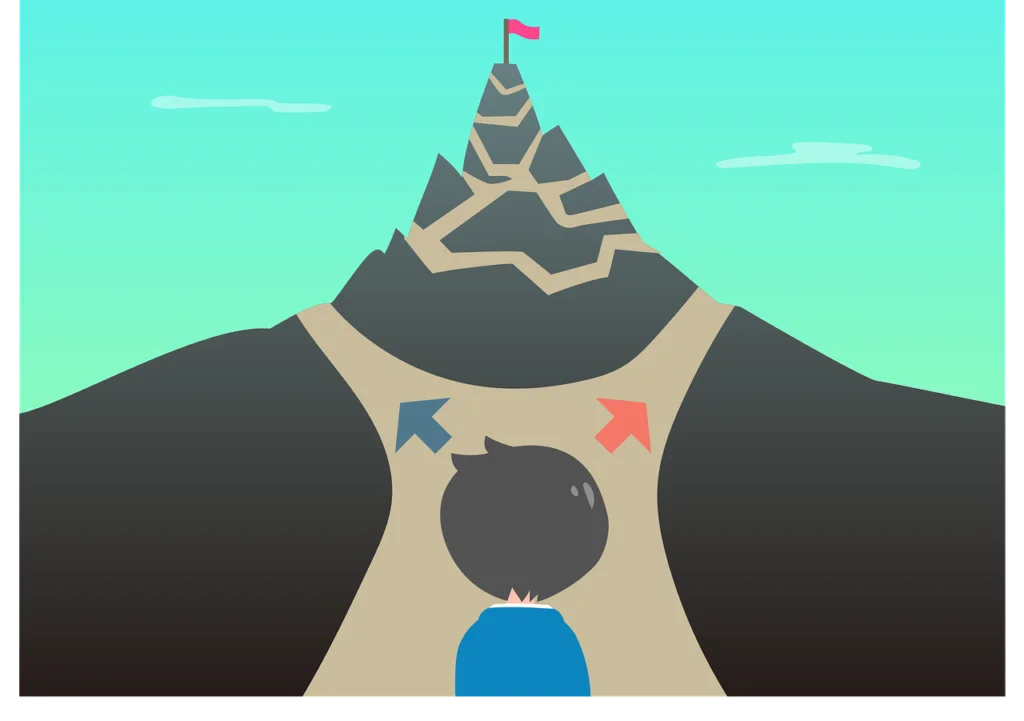The Process of Leadership Development
The ancient Chinese philosopher Xun Kuang is quoted as saying, “Tell me and I forget, teach me and I may remember, involve me and I learn.”
I wish more leaders understood this dynamic. It seems today, more than ever, that training and developing leaders has been reduced to “Read this article,” or “Watch this video.” However, the reality is that if you want your team to develop and grow, it’s going to take an intentional, individualized leadership development coaching process. And doing so will take time.
But take heart—the results of this type of approach will be a solid team, able to perform beyond what you thought possible.
How a Leadership Framework Can Help
So how does intentional, individualized leadership development work? I have found that having a defined leadership framework with clear stages to be the best approach. Let me give an example.
Several years ago, I worked with the owner of a janitorial services company. He had a unique approach to onboarding new hires. His definable stages were “Tell, Show, Do, Review”:
- Tell: Instruct and educate on the concept, skill, or component.
- Show: Illustrate how the concept works using real-life examples.
- Do: Through experiential scenarios, have the new employee put the new skill or concept to work.
- Review: Discuss with the new employee how they did, offering insight and feedback.
These bite-sized phases of learning helped both manager and employee as they worked from milestone to milestone in eventually getting onboarded. Yes, it took longer, but the result was, more often than not, a well-prepared, productive employee.
When a teacher and student each understand where they are in the framework, when they can see the next step on the pathway, it creates confidence and momentum as they move forward to the ultimate goal. This is not a “training” approach per se, but more of a leadership development coaching.
The Leadership Square Model
The model I recommend for this is called The Leadership Square. The “Square” (see image below) illustrates the four phases each person being developed (“D”) goes through, as well as the approach the leader (“L”) should take in each phase. Remember, leadership development is a process. Like most processes, development takes time and comes about in phases or stages.

The value of this framework is that it gives both the person being developed and the leader a clear understanding on exactly where the learning process is at any given moment. Each person knows their role in each process, and each phase is designed to build on the previous one.
This concept can be used for any type of leadership development, or any other kind of development for that matter. Keep in mind that even though the model is linear, developing leaders is more often iterative, where certain elements need to be repeated over and over.
Directive Leadership: “I Do, You Watch”
The first phase of the Leadership Square is directive leadership. In this phase, you have a new learner who is unconsciously incompetent. That doesn’t mean they’re stupid. It just means they don’t know what they don’t know. They are usually excited, and even confident. However, this is uninformed.
The style of coaching needed here is directive leadership. Teaching and instruction are often what happens in this phase. But this is not just information dissemination. The best approach is for the leader to say, “I do, you watch.” Give the learner as many opportunities as possible to watch, observe, learn. Keep in mind that not everyone begins at this stage. For those that do, the goal is to get them to the next stage.
Invitational Leadership: “I Do, You Help”
At this second stage, we find the learner becoming consciously incompetent. They still don’t know a lot, but now they are aware of what they don’t know. Learning and realization of the challenges ahead result in frustration and anxiety. Reality strikes, and they begin to think, “I don’t know as much as I thought I knew.”
The leadership development coaching approach here is invitational leadership. The coach moves to paint the vision the future, moving away from directive instructor to coaching guide. The leader should work to provide space for initial experiences, questions, and reflecting. In essence, the leader moves to “I do, you help.”
Coaching Leadership: “You Do, I Help”
The third stage of the Leadership Square is coaching leadership. A marked turn happens here: The student becomes responsible. This is because they are now consciously competent. They know what they need to know, it’s just not yet second nature. They have a growing understanding and know-how. Knowledge, skill, and wisdom don’t come naturally just yet, but there is growing confidence as they “get their reps in.”
The leader must also shift the leadership development coaching approach to “You do, I help.” The leader becomes collaborator and friend, even giving the learner opportunities to fail. Keep in mind that this is often the most difficult phase for the learner. In the previous two phases, they have the security of being able to fall back on their leader. In this phase, they feel it’s all on them.
Delegative Leadership: “You Do, I Watch”
The ultimate goal is to get your learner to phase four in the Leadership Square. In this phase, the learner is now unconsciously competent. Confidence—and performing without having to think about it—is becoming commonplace. They have become adept at the skill or concept, even now able to help others in their development.
The leadership development coaching approach here is delegative leadership. This is where the leader turns over responsibility, affirms, and celebrates. The leader moves to “You do, I watch.” This frees up the leader to focus on their core responsibilities and look to develop other leaders.
3 Steps for Using the Leadership Square Model
Once you understand the four phases of leadership, you can put that knowledge into action with a simple three-step process. This process will result in you putting a leadership development plan in place.
- Define success: Use each side of the Leadership Square (D1, D2, etc.) to define the learning outcomes. In other words, “What evidence will I see to know they are now in the next phase?” For example, when they’ve moved from observing (D1), and are asking “Can I help you with that?”, they have demonstrated D2 behavior.
- Determine learning activities: The next step is to identify the specific activities that the learner needs to experience in order to move to the next phase. For example, a new sales rep in D1 may need to ride along on 10 sales calls. This activity moves them along to D2, where they may be ready to participate in a sales call.
- Review progress: There should be regularly scheduled times to review the learner’s progress through the Leadership Square. Here’s where the leader reviews progress, provides coaching, celebrates accomplishments, and looks towards next steps.
How Leadership Development Coaching Can Help
I recently had a conversation with a leadership coach who said, “Every leadership coach needs a leadership coach.” Leaders often need someone to guide them on how to walk someone around the Leadership Square. This part of executive coaching is so rewarding. It’s where I get to “train the trainer.” If you’d like to learn more about how to use the Leadership Square with your team, feel free to contact my team. We’d love to help you develop as a leader so you can better develop the people under you.
Latest Posts



